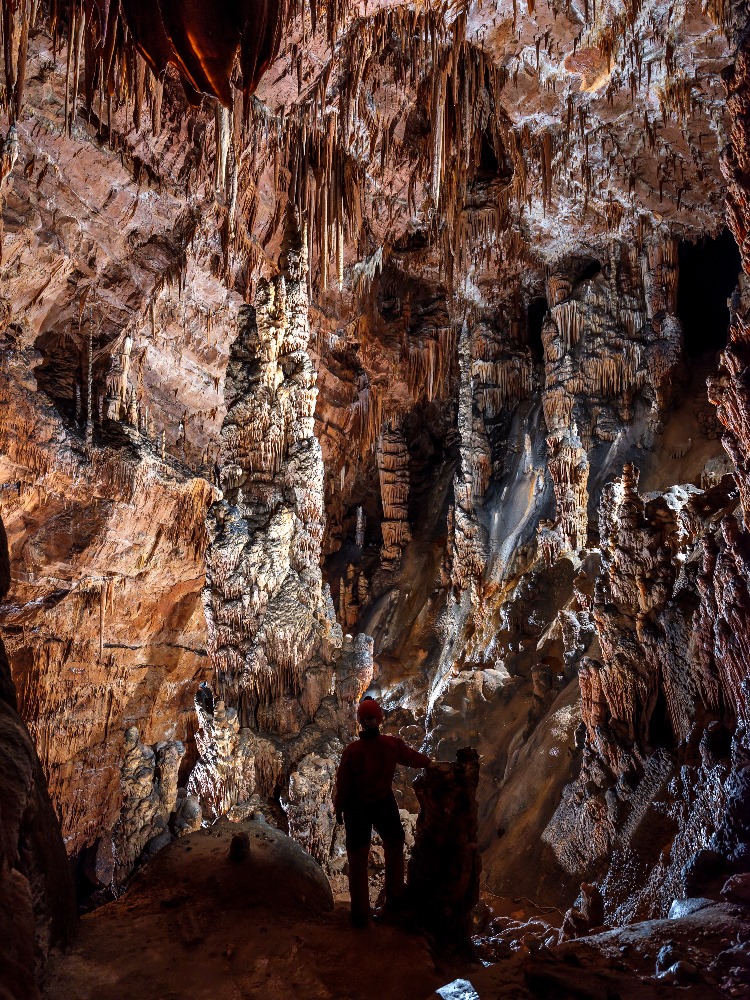
THE CAVE
The Vilenica Cave was formed in the Cretaceous limestone of the Lipica Formations and faces Southeast. The cave consists of a uniform, slanting gallery rich in flowstone formations and rockfalls that follow us from the first hall onwards and get increasingly abundant and varied with depth.
The abundance of rockfalls and dripstones speaks volumes about the advanced age of the cave. The exact age is actually still unknown, just as the information which river carved the cave, because today the cave lies much closer to the surface than when the cave was still flooded.
The entry into the cave formed when the ceiling collapsed. The giant debris cone is still here, reminding us of the collapse and helping us to descend into the first chamber aptly called the Dance Hall. Every year it holds the closing ceremony for the Vilenica International Literary Prize. The focus of the chamber is a mighty dark gray column named The Moor by the visitors in the past.
The gallery descending from the Dance Hall is uniform but at the same time diverse. In some places it descends, somewhere it ascends and reaches up to 30 meters below the surface. The gallery expands into several chambers; first into the Avenue of Dripstones, then into The Red Room, and lastly into the Hall of the Fairies.
The Hall of the Fairies is the last chamber accessible to tourists. After that, the cave steeply descends into a part named the Fabris tunnel with much smaller rooms and with numerous tight passages. The bottom of the cave reaches 191 meters below the surface. The whole cave is more than a kilometer long, however only 450 meters are illuminated and accessible for visitors.

